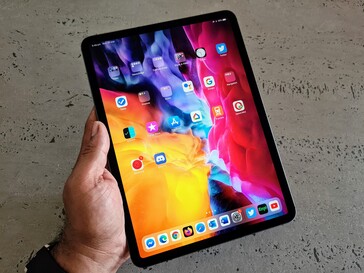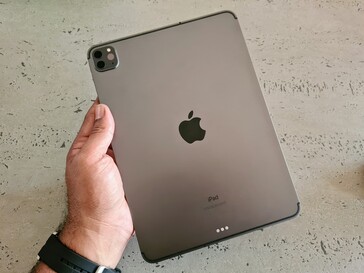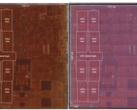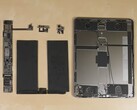It seems Apple can barely launch a product without some sort of controversy these days. The first generation of this relatively new iPad Pro design launched in 2018 and immediately found itself plagued by claims that it was far too easy to bend out of shape. In fact, the cellular model was actually prone to shipping slightly warped out of the box – at least with the early units. Of course, Apple claimed that this was ‘normal’ and a result of the cooling antenna material warping the device out of shape by around the width of three A4 pages or so.
After weathering that particular storm, Apple is back again with what many had hoped was a more durable chassis. This remains a question mark, however, as at least one vlogger found that it still bends too easily when force is exerted on it leading to claims of Bendgate 3.0. In hand it feels sturdy enough although we aren’t into torture testing our devices as is the want of others - we can conclude, however, that the new iPad Air design is undoubtedly more robust. Another controversy erupted when Notebookcheck exclusively revealed that the A12Z SoC in the new model is nothing more than a re-binned A12X with its 8th graphics core enabled. On the plus side, all models this time ship with 6 GB of LP DDR4X RAM (up from 4 GB) which was previously only reserved for the super expensive 1 TB model.
Other tweaks include the addition of a U1 ultra-wideband chip (anticipated to work with Apple’s forthcoming location tags), improved storage capacity, and new-found support for Wi-Fi 6 (802.11ax). The only major update to come with the 2020 iPad Pro range is the new rear camera array. This brings with it a new 10 MP ultrawide camera coupled with the previous model’s 12 MP wide camera. Also new in the camera array is Apple’s ballyhooed LiDAR scanner. As we noted in our closer look at the LiDAR scanner, it is a more sophisticated version of the 3D ToF sensors we have seen on flagship Android smartphones recently. The use of a LiDAR scanner brings far greater depth accuracy and speed which is particularly useful in Apple’s ongoing interest in making augmented reality apps even better.
In terms of iPadOS, the big news is the arrival of fully functional and enabled mouse and trackpad support in version 13.4. Apple has tried all sorts ways of sticking to the touch-first approach over the past ten years, and quite frankly, they have all failed. As an iPad user for most of that time, it really started to become infuriating. So much so, that I dumped the iPad for the Samsung Galaxy Tab S5e and then the excellent Galaxy Book S more recently. The arrival of mouse support for the iPad Pro is a game-changer and really transforms it into a genuine laptop alternative. Apple’s implementation, which features a dynamic cursor that changes according to context is also smart. For example, although shaped like a dot rather than a pointer, when hovered over text, it turns into a text selection cursor making it clear you can edit, or copy/cut and paste.
Apple’s new Magic Keyboard accessory for the iPad Pro, which unfortunately doesn’t arrive until May, is also a real highlight. We will certainly be taking a closer hands-on look at it when it comes, but it is worth briefly discussing its appeal. It is an all-new product that, in product photos, really transforms the iPad into something that looks much more cutting-edge and futuristic. It uses a traditional island keyboard that is backlit but adds a new back stand that allows the iPad Pro to ‘float’ above the keyboard. It’s not an original design idea, but it really does look the part in this implementation. The design approach was necessitated by the fact that Apple had to squeeze in the new trackpad now built into it. The only drawback is its horrendously high price which starts at US$300 for the 11-inch model and US$350 for the 12.9-inch model. The iPad Pro Smart Keyboard Folio, which wasn’t cheap to begin with at US$179, has also been tweaked and remains available as an alternative, but of course, doesn’t include a trackpad.
There was already a lot to like about the iPad Pro 2018 model. The new 2020 model, while a modest upgrade in terms of performance and features, builds on what is already a market-leading product with some useful enhancements. Despite rumors of a more powerful A14X-powered model to arrive late this year alongside the iPhone 12 launch, that is also said to sport 5G connectivity, there is more than enough performance in this model to keep you powering on for at least the next two to three years or more. The timing of both a new iPad Pro or iPhone 12 is all up in the air right with the COVID-19 crisis changing everyone’s plans and time frames. If the lack of mouse support was holding you back and you don’t already own a 2018 iPad Pro, there is little not to recommend the 2020 iPad Pro refresh except that it continues with the same, now lackluster, 10-hour battery life it has offered for years on end. It starts at US$799, which is within striking range for it to attract the wide audience it deserves.
Source(s)
Own




















